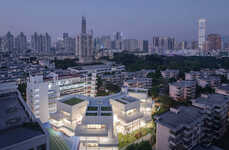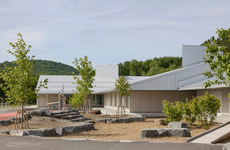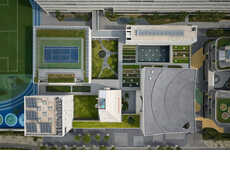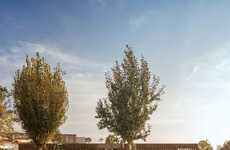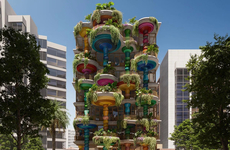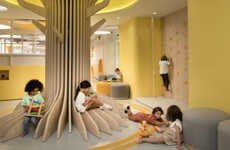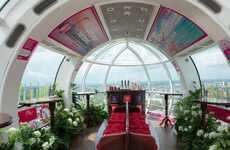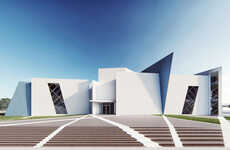
The Qingpu Pinghe International School has a Decentralized Design
Josh Thompson-Persaud — May 24, 2021 — Art & Design
The Qingpu Pinghe International School in Shanghai has a village-like decentralized design that consists of a collection of varied buildings. The design, developed by Chinese studio Open Architecture, diverts from the traditional megastructure theme embedded in much of Chinese architecture in favor of a dispersed mix of structures.
Each building in the Qingpu Pinghe International School has a distinctive identity that works with the purpose of the space. The arts center is based around an angular concept that is reminiscent of a modern art gallery. The theater and library are set in a blue sloping building that has a unique whale shape. The school's classrooms are contained within five-storey cubic structures that have rounded corners and a bamboo and glass exterior. Together, the buildings offer the school everything needed to provide a well-rounded learning experience in a varied architectural layout.
Image Credit: Dezeen
Each building in the Qingpu Pinghe International School has a distinctive identity that works with the purpose of the space. The arts center is based around an angular concept that is reminiscent of a modern art gallery. The theater and library are set in a blue sloping building that has a unique whale shape. The school's classrooms are contained within five-storey cubic structures that have rounded corners and a bamboo and glass exterior. Together, the buildings offer the school everything needed to provide a well-rounded learning experience in a varied architectural layout.
Image Credit: Dezeen
Trend Themes
1. Decentralized School Designs - Schools can adopt decentralized designs consisting of a collection of varied buildings with distinctive identities to offer students a well-rounded learning experience.
2. Dispersed Mix of Structures in Architecture - Architects can explore decentralized designs that divert from traditional megastructure themes to create a dispersed mix of structures with distinctive identities.
3. Individualized Building Design - Designers can emphasize individualized building design to provide purpose-specific spaces with unique identities for each building within a larger complex.
Industry Implications
1. Education - The education industry can adopt decentralized design school structures to create more well-rounded learning experiences for students.
2. Architecture - The architecture industry can explore dispersed mix of structures to create unique buildings with individualized identities.
3. Design - The design industry can emphasize individualized building design to create purpose-specific spaces with unique identities within larger complexes.
2.4
Score
Popularity
Activity
Freshness

